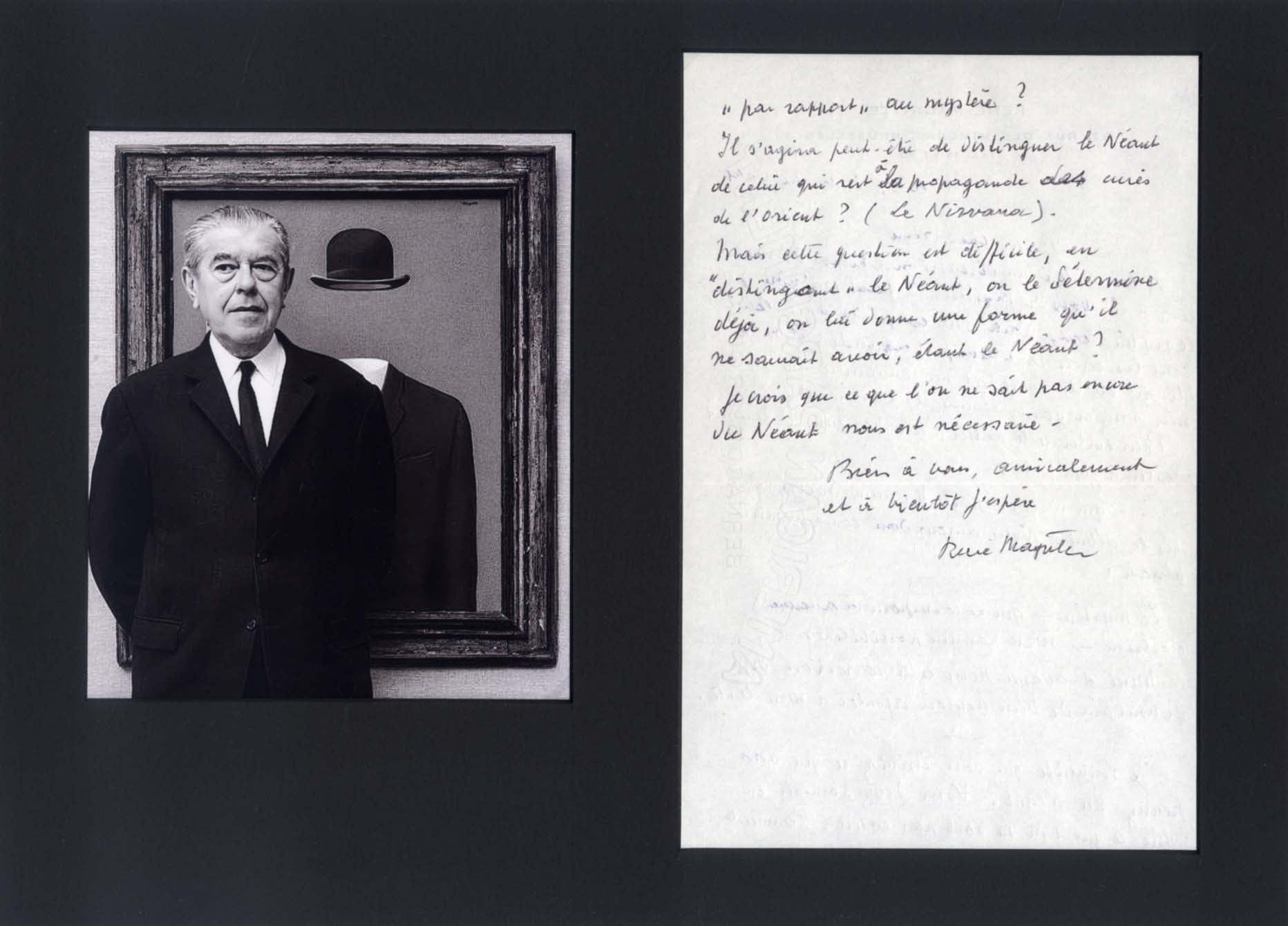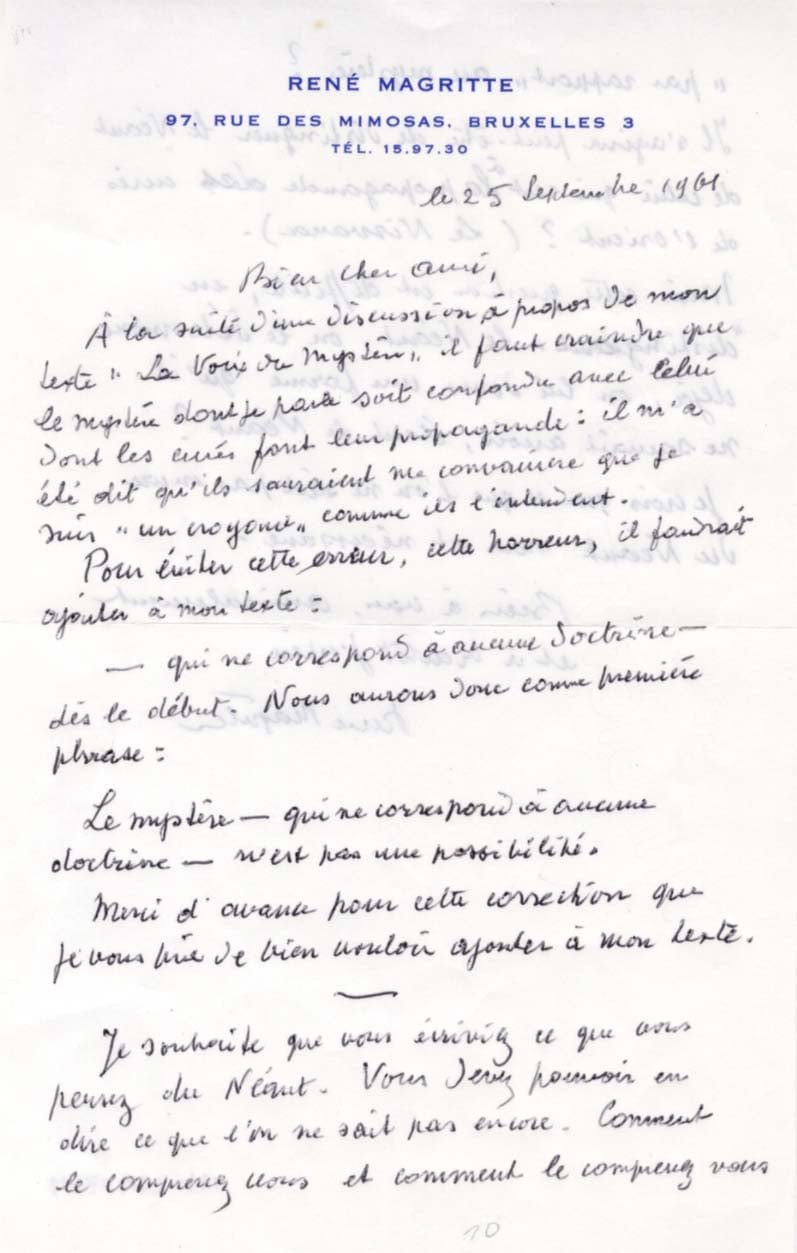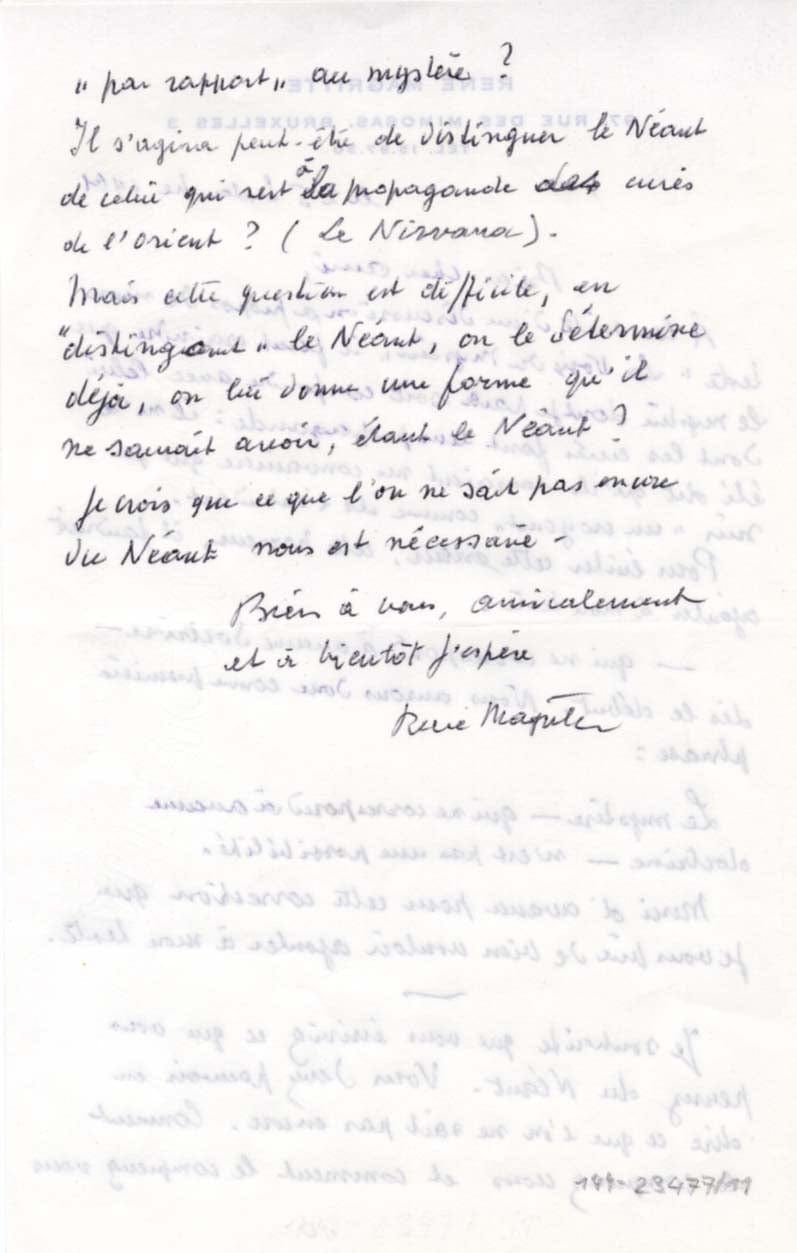Beschreibung
Eigenhändiger Brief mit Unterschrift, zwei Seiten (beidseitig beschrieben), 5,25 x 8,5 inch, persönlicher Briefbogen, Brüssel, 25.09.1961, in französischer Sprache, an den belgischen Dichter Andre Bosmans - bezüglich seines Artikels `La voix du mystère`, der in `Rhetorique` (einer von Bosmans gegründeten Zeitschrift) veröffentlicht werden soll, in dunkler Tinte geschrieben und signiert "René Magritte", zur Ausstellung attraktiv montiert (herausnehmbar) mit einer Photographie von René Magritte (insgesamt 12,5 x 9 inch), mit einer horizontalen Faltenspur - in nahezu sehr gutem Zustand.
In Ausschnitten:
"Bien cher ami,
A la suite d`une discussion a propos de mon text `La Voix du Mistère`, il faut craindre que le mystère don`t je parle soit confondu avec celui don`t les curés font leur propaganda: il m`a été dit qu`ils sauraient me convaincre que je suis `un croyant` comme ils l`entendent.
Pour éviter cette erreur, cette horreur, il faudrait ajouter à mon texte:
- qui ne correspond à aucune doctrine - dès le début. Nous aurons donc comme première phrase:
Le mystère - qui ne correspond à aucune doctrine - n`est pas une possibilité [...]
Je souhaite que vous ecriviez ce que vous pensez du Néant. Vous devez pouvoir en dire ce que l`on ne sait pas encore. Comment le comprenez vous et comment le comprenez vous `par rapport` au mystère?
Il s`agira peut-être de distinguer le Néant de celui qui sert à la propaganda des curés de l`Orient? (Le Nirvana).
Mais cette question est difficile, en `distingant` le Néant, on le determine déjà, on lui donne une forme qu`il ne saurait avoir étant le Néant?
Je crois que ce que l`on ne sait pas encore du Néant nous est nécessaire.
Bien à vous, amicalement et à bientôt j`espère
René Magritte"
Übersetzt:
"Sehr lieber Freund,
Nach einer Diskussion über meinen Text `La voix du mystère` muss man befürchten, dass das Geheimnis, von dem ich spreche, mit dem verwechselt wird, was die Priester propagieren: Mir wurde gesagt, dass sie mich davon überzeugen könnten, dass ich `ein Gläubiger` bin, wie sie es für richtig halten.
Um diesen Fehler, diesen Horror zu vermeiden, sollte ich meinem Text hinzufügen:
- was keiner Lehre entspricht - von Anfang an. Unser erster Satz lautet daher:
Das Mysterium - das keiner Lehre entspricht - ist keine Möglichkeit, [...]
Ich möchte, dass Sie aufschreiben, was Sie über das Nichts denken. Sie müssen sagen können, was wir noch nicht wissen. Wie verstehen Sie es und wie verstehen Sie es `in Bezug` auf das Mysterium?
Vielleicht geht es darum, das Nichts von dem zu unterscheiden, was der Propaganda der Priester des Ostens dient? (Nirwana).
Aber diese Frage ist schwierig. Indem wir das Nichts `unterscheiden`, bestimmen wir es bereits, wir geben ihm eine Form, die es nicht haben könnte, nämlich das Nichts?
Ich glaube, dass das, was wir noch nicht über das Nichts wissen, für uns notwendig ist.
Herzliche Grüße, freundlich und bis bald, hoffe ich
René Magritte"
Weitere Infos zur Person
Profession:
(1898-1967) Belgian Surrealist artist - he became well known for creating a number of witty and thought-provoking images
Year of Birth: 1898
Echtheitszertifikat
Zahlung & Sicherheit
Deine Zahlungsinformationen werden sicher verarbeitet. Wir speichern keine Kreditkartendaten und haben auch keinen Zugang zu deinen Kreditkartendaten.



